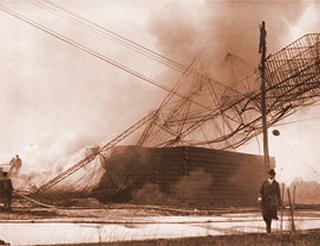
Previous
Files
The
Ice Man
Commander
Ken
Hanging
Out with Dwayne
The
Dream
Vertigo
Flying
School
Ready
For War
Camping
at Wilbur's
Going
to Mecca
The
Roma
Staggering
Off
Flying
in Europe
Twisted
Humor
Hinterlandings
Oh,
The Places You'll Go
They
Kill Cats
First
Flight
BetterThan
Gear-Up
Déjà
vu
Bird
Dogs
Dragging
Nylon
Simpson
Field Days
Flying
Odd
Busting
Sod
Bending
Metal
More
Cessna Days
Cessna
Days
After
The Fall
Meeting
Leroy
Escape
From Plenty
Bucket
Lists
David
Board Letter
Remembering
Orion
Flying
With Dead
Recovery
Squadron
Crown
Royal Special
Coasting
Thru Winter
Ferrying
Baron - 4
Ferrying
Baron - 3
Ferrying
Baron - 2
Ferrying
Baron - 1
Harley
Davidson
David
Board Letter
Flying
the Cassutt - 2
Flying
the Casutt
David
Board Letter
Darkness
- 3
Darkness
- 2
My
New Chevrolet
Darkness
-1
David
Board Letter
David
Board Letter
Working
For Myself
The
Abandoned Field
David
Board Letter
Growing
Up in WV
David
Board Letter
David
Board Letter
Puerto
Rico - 2
Puerto
Rico
The
Aztec
1939
Piper J-3
Luscombe
8A,
Planning
Routine Flight
Rain
on the Roof
Buying
the History
Most
Recent
|
The
Life and Death of the Roma
May
4, 2015
Almost
anyone who would be reading this column has heard of the airship
Hindenburg, and of the terrible fate that it, it's crew and it's
passengers suffered in that field in New Jersey in 1937. Very
few people however, have heard of the airship Roma, which met a
similar fate some fifteen years before.
 Built
in Italy in 1919, the Roma's speed, its payload and its range
had drawn attention throughout Europe and finally the attention
of the US government, which purchased it for the Army in 1921.
The Roma was at that time the largest semi-rigid dirigible in
the world and she cost the United States $200,000 in 1921
dollars. Built
in Italy in 1919, the Roma's speed, its payload and its range
had drawn attention throughout Europe and finally the attention
of the US government, which purchased it for the Army in 1921.
The Roma was at that time the largest semi-rigid dirigible in
the world and she cost the United States $200,000 in 1921
dollars.
The craft was almost inconceivably big, and
by the standards of the day, breathtakingly fast: 410 feet long,
92 feet tall, capable of hauling passengers and cargo at a mile
a minute. It had an astonishing 42,000 pounds of lifting
capability.
The semi-rigid construction was a
compromise between zeppelins, which owed their distinctive cigar
shapes to a light metal skeleton beneath their fabric skins, and
blimps, which depended on the pressurized gas within their skins
to maintain their form. It lacked a skeleton, but its gasbag was
held somewhat in shape by a metal-ribbed nose cap and a rigid
keel that ran along the bag's underside, from nose to tail. This
keel housed the control room, navigation space, passenger cabin,
the outriggers on which the engines rode, and - far astern - a
huge, box kite affair that served as the ship's rudder and
elevator.
In addition to the 11 cells of hydrogen
within its skin, it housed six cells of air, called ballonets,
into which additional air could be pumped if the gasbag drooped
or flattened.
After delivery to the US Army in 1921,
the Roma was found to be underpowered by US standards and the
airship was delivered to Hampton Roads, VA where the engines
were changed from the original Italian Ansaldo engines to the
400 horse power American Liberty engines, of which the Army had
an almost unlimited supply from the Great War.
The
refitting complete, the Roma's commander, Captain Dale Mabry,
called a celebration for the night of February 20, 1922, the
evening before the airship was to make it's maiden flight with
the new engines. A formal ball was held at the base and was
attended by the crew, resplendent in their dress uniforms, and
selected guests from the newspapers and the town. The next
morning the Roma made it's last flight.
Accounts of
survivors and of eye witnesses as to what had happened appeared
to agree that the huge kite-like structure of the stern rudder,
itself as large as a bombing plane, had slipped to one side as
the Roma drove along a thousand feet above the army base.

An
official list of the survivors, dead and missing in the Roma
disaster was received from Langley Field by the army air service
on Tuesday night following the accident. Thirty-four men were
killed, eight were injured seriously and three were injured or
only slightly bruised when the giant army airship with her crew
and a number of civilians, totaling 45 in all aboard, plunged
from a thousand feet or more in the air to the ground at the
Hampton Roads Naval base.
The accident presumably was
caused by a broken rudder and as the big dirigible plunged to
earth it capsized across a high tension electric line bursting
in a roaring furnace of blazing hydrogen gas.
Long
after dark that Tuesday night many hours after her fall, the
ship was still a mass of flames from end to end of her 140 foot
mass. The fire fed on the million cubic feet of gas which had
distended the great bag for the flight and made all attempt at
rescue futile.
 Barely
a dozen of those aboard were picked up alive and one of those
died on the way to the hospital. All of those who survived the
fire escaped by jumping as the ship struck. The others penned in
the hull were burned to death. Barely
a dozen of those aboard were picked up alive and one of those
died on the way to the hospital. All of those who survived the
fire escaped by jumping as the ship struck. The others penned in
the hull were burned to death.
I learned about the
Roma many years ago, not from reading history, but rather first
hand from my uncle, Harold Holmes, who married my Aunt late in
life, after both had been widowed. When he found that I was a
flyer, he told me the story of the Roma and about his brother,
Sergeant James Holmes, who had been a crew member on that
fateful morning. He was killed along with most of the rest of
the people on board. When I questioned him for more details, he
told me to go look in a chest in an outbuilding and I would find
a newspaper account of the accident.
I remember
standing above the opened locker in the dim light of the
outbuilding, looking down into it. It seemed filled with his
dead brother's possessions and I had the very strong feeling
that it was a time capsule rather than an old wooden chest that
I had just opened. Lying at the very top of the chest was his
brother's dress uniform, with the distinctive insignia of the
Army Lighter Than Air Corps. As I unfolded it to get a better
look, I heard paper crinkle in an inner pocket.
There
have been occasions in my life when fear caused the hair on my
neck to stand up, but on this occasion it was the pure intensity
of the moment that caused it. It was the realization that there
in that shed, I had literally reached back and touched the past.
 For
a long moment I just stood there in the soft light of the shed,
numbly holding in my hands, probably the first hands to touch it
since the ones that placed it there, Sergeant Holmes' formal
invitation to the Roma Ball. For
a long moment I just stood there in the soft light of the shed,
numbly holding in my hands, probably the first hands to touch it
since the ones that placed it there, Sergeant Holmes' formal
invitation to the Roma Ball.

|



